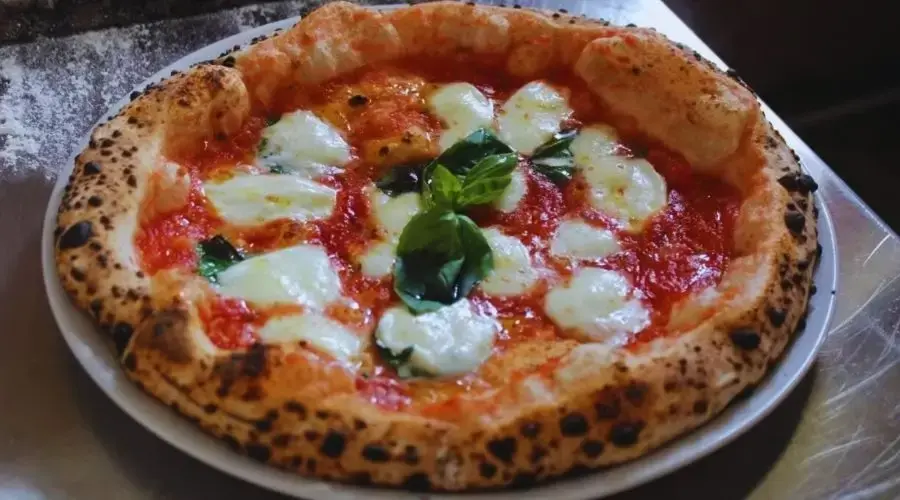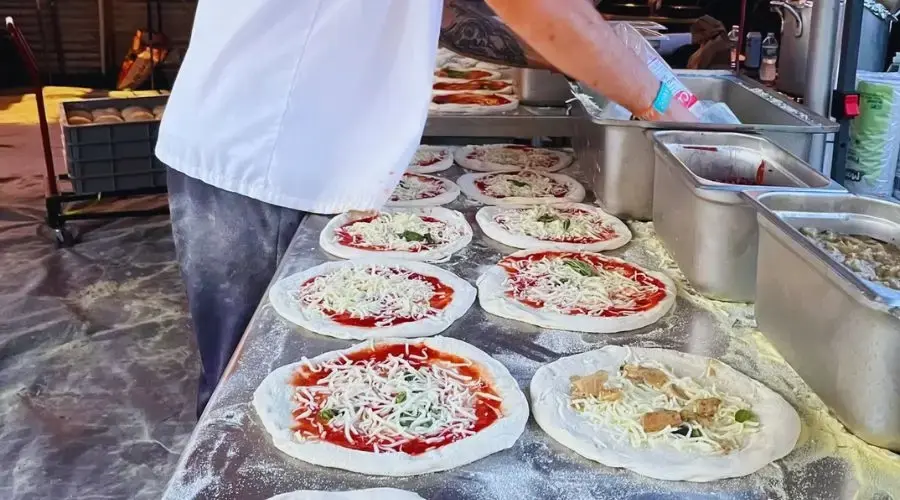Neapolitan Pizza: The Soul of Naples on a Plate
- eileen4499
- Jul 2
- 3 min read

After decades of serving tens of thousands of people across Bergen County, our research is clear - Neapolitan pizza captivates food lovers with its simplicity, history, and extraordinary flavor. Born in the bustling streets of Naples, Italy, this iconic style of pizza has made its mark on global cuisine and has even been honored by UNESCO as an intangible cultural heritage.
In this blog, we’ll explore what makes it unique, its traditional preparation, how Culto Italiano brings it authentically to your table, and why you should experience it today.
A Slice of History: Origins and Heritage
Neapolitan pizza is more than just food—it’s a cultural symbol. The earliest versions of pizza emerged in Naples during the late 18th and early 19th centuries. Street vendors sold flatbreads topped with simple ingredients, making it accessible to the city’s working class.
But the culinary world truly took notice in 1889 when King Umberto I and Queen Margherita visited Naples. They tasted a pizza topped with tomatoes, mozzarella, and basil—ingredients mirroring the Italian flag’s colors—and later dubbed it “Margherita.” This royal endorsement sparked a surge in popularity that spread far beyond the city limits.
In 2017, UNESCO recognized the art of Neapolitan pizza making as a cultural treasure—honoring generations of pizzaioli who have preserved traditional methods with passion and care.
What Makes Neapolitan Pizza Special?
1. Simplicity at Its Best
At its core, this pizza style relies on just four ingredients: flour, water, salt, and yeast. No fats, no sugar, no enhancers. This purity lets each ingredient shine, creating a balanced and harmonious flavor.
2. Signature Dough—Edged and Tender
Neapolitan dough is known for its thin base and airy crust. The high-rimmed edge—called the cornicione—is the result of a slow 24-hour fermentation process and careful kneading. It’s puffy, slightly charred, and wonderfully chewy.
3. Wood-Fired Oven Magic
Traditional ovens reach searing temperatures—up to 900°F (485°C). The pizza cooks in 60 to 90 seconds, achieving the delicate balance of a crisp yet tender crust.
Neapolitan vs. Neopolitan: Spelling Matters (But It’s the Same Pizza)
Quick note: “Neopolitan” is a common misspelling. The correct spelling—Neapolitan—comes from “Napoli,” the Italian name for Naples. While they refer to the same style, the right spelling honors its roots.
The Classics: Why the Margherita Reigns
Among traditional styles, Pizza Margherita is the crown jewel. Topped with hand-crushed tomatoes, mozzarella (buffalo or fior di latte), fresh basil, and olive oil—it’s a celebration of quality ingredients.
Other classics include:
Marinara: Tomatoes, garlic, oregano, and olive oil—cheese-free and flavorful.
Margherita Extra: A premium take, featuring high-grade buffalo mozzarella.
At Culto Italiano, every slice is a tribute to these timeless recipes. We respect the tradition, using methods and ingredients that reflect Naples’ proud culinary legacy.
Why Culto Italiano?
What sets Culto Italiano apart is our unwavering commitment to authenticity—not just imitating Naples, but channeling it.
Italian Ingredients: We use flour, cheese, and tomatoes imported straight from Italy.
Wood-Fired Perfection: Our traditional ovens bring out the perfect crust—crackling, charred, and tender.
Skilled Pizzaioli: Our chefs are trained in old-world techniques, mastering the fermentation, kneading, and firing that define true Neapolitan pizza.
We don’t claim certification—but we do honor the craft with integrity and care in every step.
How to Enjoy Neapolitan Pizza Perfectly
Serve Immediately: Best right out of the oven.
Fold it “a libretto”: Like a booklet—the classic Neapolitan way.
Taste it Slowly: Savor the tangy tomato, creamy cheese, and charred crust.
Pair Smart: Sparkling water or an Italian red complements it beautifully.
Common FAQs
Q: Can I recreate it at home?
While you can approximate the style, true Neapolitan pizza requires a wood-fired oven at extreme heat. Home ovens can’t quite replicate the results.
Q: Is it gluten-free?
No—traditional dough uses wheat flour. Gluten-free options may be available, but they differ from the classic preparation.
Q: Can I customize toppings?
We stay true to traditional styles—but at Culto Italiano, we also offer seasonal and creative variations for adventurous palates.
Experience It for Yourself
If you crave the authentic flavor and artistry of real Neapolitan pizza, visit Culto Italiano at cultoitaliano.com. Whether dining in or ordering for delivery, our pizzas bring Naples to your table—crafted with care, history, and Italian soul.





Comments